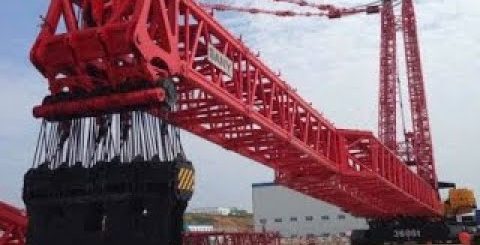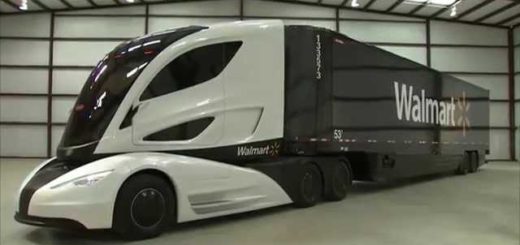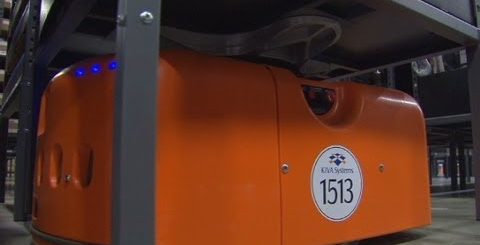Guide to Autonomous Vehicles and Supply Chain.
Introduction
Autonomous vehicles and supply chain are two of the most important and rapidly evolving technologies in the world today. Autonomous vehicles are transforming the way we move goods and people, while supply chain is revolutionizing the way we manage and deliver goods. This guide will provide an overview of both technologies, their applications, and how they are being used to improve efficiency and reduce costs in the transportation and logistics industries. It will also discuss the challenges and opportunities associated with the development and deployment of autonomous vehicles and supply chain systems. Finally, it will provide insights into the future of these technologies and their potential to revolutionize the way we move goods and people.
How Autonomous Vehicles are Revolutionizing the Supply Chain
Autonomous vehicles are revolutionizing the supply chain by providing a more efficient, cost-effective, and safe way to transport goods. Autonomous vehicles, also known as self-driving cars, are vehicles that are capable of sensing their environment and navigating without human input. This technology has the potential to revolutionize the way goods are transported, making the supply chain more efficient and cost-effective.
Autonomous vehicles can reduce the cost of transportation by eliminating the need for a driver. This can result in significant cost savings for companies, as they no longer need to pay for a driver’s wages and benefits. Additionally, autonomous vehicles can reduce the amount of time it takes to transport goods, as they can travel at higher speeds and with fewer stops. This can result in faster delivery times and improved customer satisfaction.
Autonomous vehicles can also improve safety in the supply chain. By eliminating the need for a human driver, autonomous vehicles can reduce the risk of accidents and injuries. Additionally, autonomous vehicles can be programmed to follow specific routes and adhere to traffic laws, which can reduce the risk of traffic violations and fines.
Finally, autonomous vehicles can provide companies with more data about their supply chain. Autonomous vehicles can be equipped with sensors that can collect data about the environment, such as traffic patterns, road conditions, and weather. This data can be used to optimize routes and improve efficiency.
In conclusion, autonomous vehicles are revolutionizing the supply chain by providing a more efficient, cost-effective, and safe way to transport goods. This technology has the potential to significantly improve the efficiency and safety of the supply chain, while also providing companies with valuable data about their operations.
The Benefits of Autonomous Vehicles for Logistics and Supply Chain Management
Autonomous vehicles are becoming increasingly popular in the logistics and supply chain management industry. Autonomous vehicles, also known as self-driving vehicles, are vehicles that are capable of sensing their environment and navigating without human input. Autonomous vehicles have the potential to revolutionize the logistics and supply chain management industry, providing numerous benefits to businesses and consumers alike.
One of the primary benefits of autonomous vehicles for logistics and supply chain management is improved safety. Autonomous vehicles are equipped with advanced sensors and software that allow them to detect and respond to their environment in real-time. This means that autonomous vehicles can detect and avoid potential hazards, such as other vehicles, pedestrians, and obstacles, more quickly and accurately than human drivers. This can help reduce the risk of accidents and improve overall safety on the roads.
Another benefit of autonomous vehicles for logistics and supply chain management is improved efficiency. Autonomous vehicles are capable of navigating more quickly and accurately than human drivers, allowing them to complete deliveries faster and more efficiently. This can help reduce delivery times and improve customer satisfaction. Additionally, autonomous vehicles can be programmed to take the most efficient routes, which can help reduce fuel costs and emissions.
Finally, autonomous vehicles can help reduce labor costs for logistics and supply chain management companies. Autonomous vehicles do not require a human driver, which can help reduce labor costs associated with hiring and training drivers. Additionally, autonomous vehicles can be programmed to operate 24 hours a day, 7 days a week, which can help increase productivity and reduce labor costs.
In conclusion, autonomous vehicles offer numerous benefits for logistics and supply chain management. Autonomous vehicles can help improve safety, efficiency, and reduce labor costs. As autonomous vehicles become more advanced and widespread, they will continue to revolutionize the logistics and supply chain management industry.
Exploring the Impact of Autonomous Vehicles on Supply Chain Efficiency
Autonomous vehicles are rapidly becoming a reality, and their potential to revolutionize the supply chain industry is immense. Autonomous vehicles have the potential to increase efficiency, reduce costs, and improve safety in the supply chain. This article will explore the impact of autonomous vehicles on supply chain efficiency.
First, autonomous vehicles can increase efficiency by reducing the need for human labor. Autonomous vehicles can be programmed to follow predetermined routes, allowing them to travel more quickly and efficiently than human-driven vehicles. This can reduce the amount of time and resources needed to complete a delivery, resulting in faster delivery times and lower costs. Additionally, autonomous vehicles can be programmed to avoid traffic and other obstacles, further increasing efficiency.
Second, autonomous vehicles can reduce costs by eliminating the need for human labor. Autonomous vehicles can be programmed to complete deliveries without the need for a driver, eliminating the need to pay wages and benefits. Additionally, autonomous vehicles can be programmed to optimize fuel consumption, resulting in lower fuel costs.
Finally, autonomous vehicles can improve safety in the supply chain. Autonomous vehicles can be programmed to follow safety protocols, such as maintaining a safe speed and following traffic laws. This can reduce the risk of accidents and other incidents, resulting in fewer delays and lower costs. Additionally, autonomous vehicles can be programmed to detect and avoid obstacles, further reducing the risk of accidents.
In conclusion, autonomous vehicles have the potential to revolutionize the supply chain industry by increasing efficiency, reducing costs, and improving safety. As autonomous vehicles become more prevalent, it is important to consider their potential impact on the supply chain industry.
Autonomous Vehicle Technology and Its Impact on Supply Chain Security
Autonomous vehicle technology is rapidly changing the way goods are transported and delivered. Autonomous vehicles, or AVs, are vehicles that are capable of sensing their environment and navigating without human input. This technology has the potential to revolutionize the supply chain industry by increasing efficiency, reducing costs, and improving security.
The use of AVs in the supply chain can improve efficiency by reducing the need for manual labor. AVs can be programmed to follow predetermined routes and can be used to transport goods from one location to another without the need for a driver. This can reduce the amount of time and money spent on labor, as well as reduce the risk of human error.
AVs can also reduce costs by eliminating the need for fuel and other resources. AVs are powered by electricity, which is a much cheaper and more efficient source of energy than gasoline. Additionally, AVs can be programmed to optimize routes, which can reduce the amount of time and fuel needed to transport goods.
Finally, AVs can improve supply chain security by reducing the risk of theft and other malicious activities. AVs can be programmed to follow predetermined routes and can be equipped with sensors and cameras to monitor their environment. This can help to deter criminals and reduce the risk of theft or other malicious activities.
Overall, autonomous vehicle technology has the potential to revolutionize the supply chain industry. AVs can improve efficiency, reduce costs, and improve security, making them an invaluable asset to the industry. As the technology continues to develop, it is likely that AVs will become an increasingly important part of the supply chain.
Autonomous Vehicle Technology and Its Impact on Supply Chain Visibility
Autonomous vehicle technology is revolutionizing the way goods are transported and tracked in the supply chain. Autonomous vehicles, or self-driving vehicles, are vehicles that are capable of sensing their environment and navigating without human input. This technology has the potential to revolutionize the way goods are transported and tracked in the supply chain, providing greater visibility and efficiency.
Autonomous vehicles are equipped with a variety of sensors and cameras that allow them to detect and respond to their environment. This technology allows autonomous vehicles to navigate roads and highways without the need for a human driver. Autonomous vehicles can also be programmed to follow predetermined routes, allowing for greater efficiency and accuracy in the delivery of goods.
The use of autonomous vehicles in the supply chain can provide greater visibility and efficiency. Autonomous vehicles can be programmed to track and report their location in real-time, allowing for greater visibility into the supply chain. This can help to reduce delays and improve the accuracy of deliveries. Autonomous vehicles can also be programmed to follow predetermined routes, allowing for greater efficiency in the delivery of goods.
In addition to providing greater visibility and efficiency, autonomous vehicles can also help to reduce costs in the supply chain. Autonomous vehicles can be programmed to optimize routes, reducing the amount of fuel used and the time spent on the road. This can help to reduce costs associated with transportation and delivery.
The use of autonomous vehicles in the supply chain can also help to improve safety. Autonomous vehicles are equipped with a variety of sensors and cameras that allow them to detect and respond to their environment. This technology can help to reduce the risk of accidents and improve the safety of goods in transit.
The use of autonomous vehicles in the supply chain is revolutionizing the way goods are transported and tracked. Autonomous vehicles can provide greater visibility and efficiency, reduce costs, and improve safety. This technology has the potential to revolutionize the way goods are transported and tracked in the supply chain, providing greater visibility and efficiency.
Autonomous Vehicle Technology and Its Impact on Supply Chain Cost Savings
Autonomous vehicle technology is revolutionizing the way goods are transported in the supply chain. Autonomous vehicles, or self-driving vehicles, are vehicles that are capable of sensing their environment and navigating without human input. This technology has the potential to drastically reduce costs associated with the transportation of goods in the supply chain.
The cost savings associated with autonomous vehicle technology are numerous. First, autonomous vehicles are able to operate 24 hours a day, seven days a week, meaning that goods can be transported more quickly and efficiently. This reduces the amount of time goods spend in transit, which in turn reduces the cost of storage and warehousing. Additionally, autonomous vehicles are able to travel at higher speeds than traditional vehicles, meaning that goods can be transported over longer distances in a shorter amount of time. This reduces the cost of fuel and labor associated with transportation.
Autonomous vehicles also reduce the cost of accidents and traffic delays. Autonomous vehicles are equipped with advanced sensors and cameras that allow them to detect and avoid obstacles in their path. This reduces the risk of accidents, which can be costly in terms of both time and money. Additionally, autonomous vehicles are able to navigate around traffic delays, meaning that goods can be delivered on time and on budget.
Finally, autonomous vehicles reduce the cost of labor associated with transportation. Autonomous vehicles do not require a driver, meaning that companies do not have to pay for labor costs associated with hiring and training drivers. This can result in significant cost savings for companies.
In conclusion, autonomous vehicle technology has the potential to drastically reduce costs associated with the transportation of goods in the supply chain. Autonomous vehicles are able to operate 24 hours a day, seven days a week, travel at higher speeds than traditional vehicles, reduce the risk of accidents, and reduce the cost of labor associated with transportation. These cost savings can be significant, and companies should consider investing in autonomous vehicle technology to take advantage of them.
Conclusion
The Guide to Autonomous Vehicles and Supply Chain has provided a comprehensive overview of the current state of autonomous vehicles and their potential impact on the supply chain. It has highlighted the various challenges and opportunities that come with the introduction of autonomous vehicles, as well as the potential benefits that they can bring to the supply chain. With the right strategies and investments, autonomous vehicles can help to improve the efficiency and cost-effectiveness of the supply chain, while also providing a safer and more reliable transportation system.
Autonomous Vehicle Resources
- Are Driverless Trucks The Future Of Shipping? Inside Waymo’s New Test Program.
- Autonomous Logistics: Reshaping the Global Supply Chain.
- Autonomous Self Driving Semi Trucks
- Autonomous Vehicles Quotes
- Caterpillar: Making Autonomous Vehicles a Reality.
- Driver Jobs Will Be Replaced by Autonomous Vehicles.
- How Self Driving Trucks Can Improve Logistics.
- How One Company Is Making Self-Driving Trucks A Reality
- Quotes and Training about Self-Driving Cars.
- Quotes about Robots Replacing Humans.
- Spot doing Autonomous Inspections at the Nestlé Purina Factory.
- Supply Chain Today
- Tesla Semi Truck Will Make Billions.
- The Future Of Freight: Electric Trucks, Semi-Autonomous Trucks and Driverless Trucks.
- The Tesla Semi Will Be Tesla’s Most Disruptive Vehicle Yet.
- What a driverless world could look like? Ted Talks.
- What are the risks? Autonomous car safety.








































